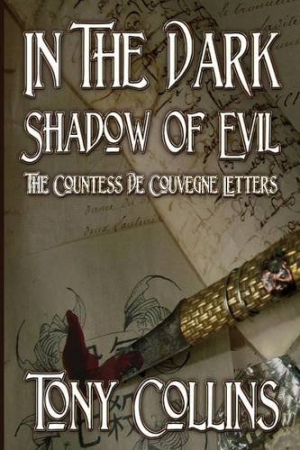In the Dark Shadow of Evil
The Countess de Couvegne Letters
This thrilling page-turner expertly blends gothic horror, mystery, and history.
In Tony Collins’s In the Dark Shadows of Evil: The Countess de Couvegne Letters, the discovery of an ancient Chinese vase in an art auction leads to a thrilling narrative filled with action-packed and supernatural surprises. The book combines gothic horror, murder mystery, and historical fiction, melding and balancing the three elements into a very engaging read.
Baxter is an art specialist and dealer who understands Asian art and its commercial value. When he finds an ancient Chinese porcelain vase in a Brittany art auction, he acquires it by outbidding some shady, angry competition. But his acquisition leads to mysterious, murderous happenings that follow Baxter home to Britain. As he unravels the historical mysteries surrounding the vase, he is pursued by an underground art cartel that wants the vase at any cost.
The term “page-turner” could be applied to In the Dark Shadow of Evil. Collins uses short paragraphs and dialogue passages to keep the reader wanting to know what happens next. Using exact prose and details, Baxter examines the vase’s history via museum archived documents, which explain that it was considered a bad omen during past battles between France, Britain, and China. At the same time, he dreams of mystery women; and his mentor, Professor Hadley, is found dead in his apartment. Baxter must unlock the mystery of the vase to understand what is happening.
If In the Dark Shadow of Evil suffers at all, it’s in the minor details of the prose. Occasionally, the dialogue seems old-fashioned and out of place in the novel’s 2010 setting—Professor Hadley constantly addresses Baxter as “dear boy”—while some of Collins’s descriptions use old-hat literary techniques, such as Baxter thinking in italics that “her lips are so kissable,” to describe his female interest, Magali. In fact, it’s the prose detailing Baxter and Magali’s relationship that most inhibits the book. The novel’s action sequences, in which underlings of the Shāqi art cartel pursue Baxter, are well written, but some statements concerning the romance do not register as authentic: “The smell of her long hair and the sweet aroma of her soft tanned skin were intoxicating.” Better writing in such passages would strengthen the book.
This book is clearly meant to be popular entertainment. Moreover, its clear prose and lack of literary pretension make it credible as both adult and teenage popular fiction. Even with its minor flaws, In the Dark Shadow of Evil: The Countess de Couvegne Letters combines a lot of material in an enjoyable manner.
Reviewed by
James Burt
Disclosure: This article is not an endorsement, but a review. The publisher of this book provided free copies of the book and paid a small fee to have their book reviewed by a professional reviewer. Foreword Reviews and Clarion Reviews make no guarantee that the publisher will receive a positive review. Foreword Magazine, Inc. is disclosing this in accordance with the Federal Trade Commission’s 16 CFR, Part 255.

